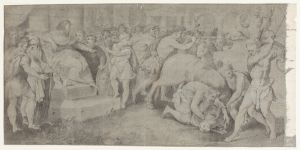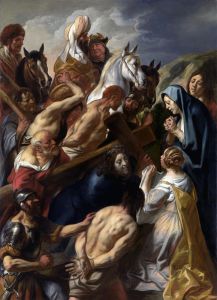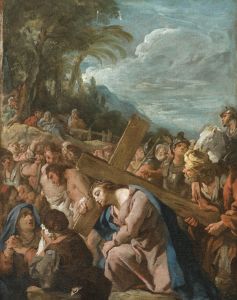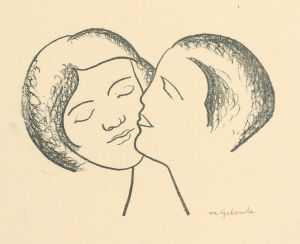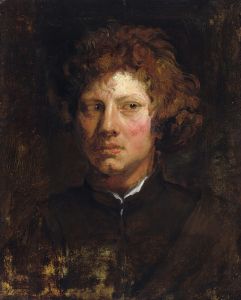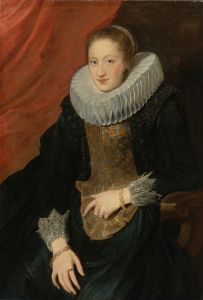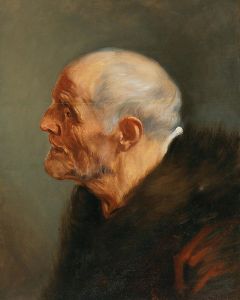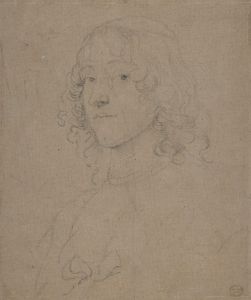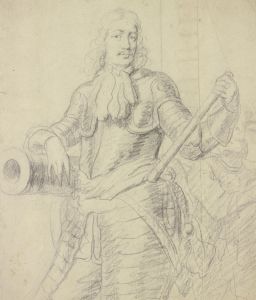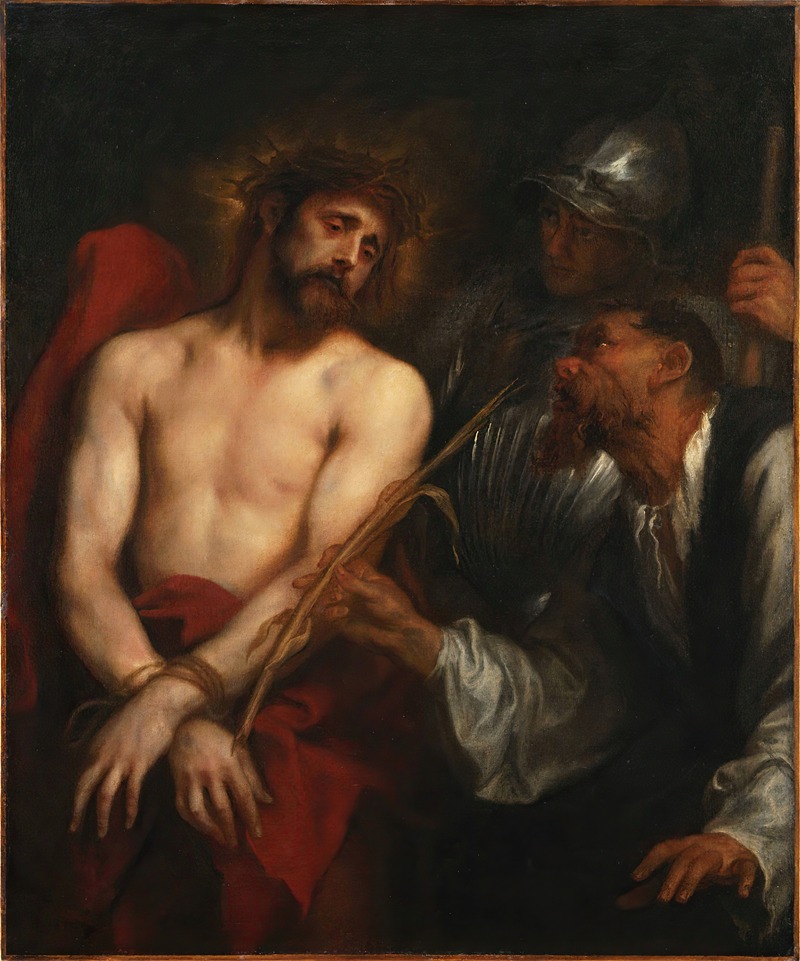
The Mocking of Christ
A hand-painted replica of Anthony van Dyck’s masterpiece The Mocking of Christ, meticulously crafted by professional artists to capture the true essence of the original. Each piece is created with museum-quality canvas and rare mineral pigments, carefully painted by experienced artists with delicate brushstrokes and rich, layered colors to perfectly recreate the texture of the original artwork. Unlike machine-printed reproductions, this hand-painted version brings the painting to life, infused with the artist’s emotions and skill in every stroke. Whether for personal collection or home decoration, it instantly elevates the artistic atmosphere of any space.
"The Mocking of Christ" is a painting by the Flemish Baroque artist Anthony van Dyck, created around 1628-1630. Van Dyck, a prominent painter of the 17th century, was known for his religious and portrait works, and he was a leading figure in the Flemish Baroque movement. This painting is one of his significant religious compositions, depicting a poignant scene from the Passion of Christ.
The artwork illustrates the moment when Christ is mocked by Roman soldiers before his crucifixion. In the painting, Christ is shown with a crown of thorns on his head, a symbol of his suffering and humiliation. The soldiers are depicted in various states of aggression and mockery, emphasizing the cruelty and disdain they have for Christ. Van Dyck's use of light and shadow, a technique he mastered under the influence of his mentor Peter Paul Rubens, enhances the emotional intensity of the scene.
Van Dyck's composition is notable for its dramatic use of chiaroscuro, a technique that contrasts light and dark to create a sense of volume and depth. The light falls on Christ's serene face, highlighting his calm and resigned expression amidst the chaos surrounding him. This contrast not only draws the viewer's attention to Christ but also underscores the brutality of the soldiers' actions.
The painting is characterized by Van Dyck's meticulous attention to detail and his ability to convey complex emotions through facial expressions and body language. The figures are rendered with a high degree of realism, and the textures of the fabrics and the metallic sheen of the soldiers' armor are depicted with great skill. This level of detail is a testament to Van Dyck's technical prowess and his deep understanding of human anatomy and expression.
"The Mocking of Christ" reflects the influence of Italian Renaissance and Baroque artists, particularly Caravaggio, whose dramatic use of light and shadow and realistic approach to religious subjects had a profound impact on Van Dyck. During his time in Italy, Van Dyck absorbed these influences, which are evident in the dynamic composition and emotional intensity of this painting.
The painting is housed in the Prado Museum in Madrid, Spain, where it is part of a significant collection of European art. The Prado Museum is renowned for its extensive holdings of works by Spanish, Flemish, and Italian masters, and Van Dyck's "The Mocking of Christ" is an important piece within this collection. The museum provides a context for understanding the broader artistic movements of the time and Van Dyck's place within them.
In summary, "The Mocking of Christ" by Anthony van Dyck is a powerful depiction of a pivotal moment in the Passion of Christ. Through his masterful use of light, shadow, and detail, Van Dyck captures the emotional and physical torment of Christ, while also highlighting his serene acceptance of his fate. The painting stands as a testament to Van Dyck's skill as an artist and his ability to convey profound religious themes with great sensitivity and realism.






